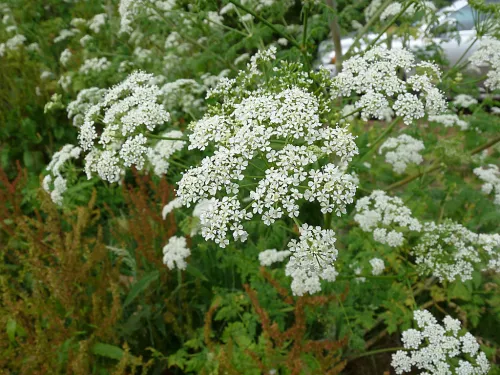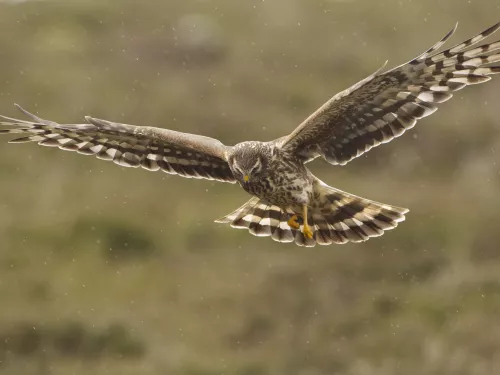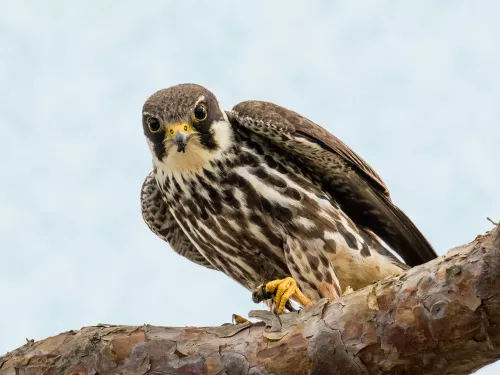
Hemlock
A notoriously poisonous plant, hemlock produces umbrella-like clusters of white flowers in summer. It can be found in damp places, such as ditches, riverbanks and waste ground.

A notoriously poisonous plant, hemlock produces umbrella-like clusters of white flowers in summer. It can be found in damp places, such as ditches, riverbanks and waste ground.
Also known as 'Raspberries and Cream', Hemp-agrimony displays 'frothy' clusters of tiny, pink flowers on top of long, reddish stems. Its leaves look like those of Hemp, although it is not related.

The hen harrier has been severely persecuted for taking game species and has suffered massive declines in numbers as a result. Thankfully, conservation projects are underway to reduce conflict surrounding its controversial prey.
This unmistakable moth spends the winter as an adult, tucked away in a sheltered spot like a cave or outbuilding.
Herb-Paris has four oval leaves set in a cross, with an understated crown of yellow-green flowers rising from the middle. This makes it quite a distinctive plant of ancient and damp woodlands on chalky soils.
Herb-robert is a low-growing plant, with small, pretty, pink flowers. Look for it in shady spots in woodland, hedgerows and coastal areas.
If you spot a crawling shell next time you're at the seaside, take a closer look… it might be a hermit crab!
The herring gull is the typical 'seagull' of our seaside resorts, though our coastal populations have declined in recent decades.
Considered Britain's most threatened butterfly, the high brown fritillary can be only be found in a few areas of England and Wales.
As its name suggests, Himalayan balsam is from the Himalayas and was introduced here in 1839. It now an invasive weed of riverbanks and ditches, where it prevents native species from growing.

Look out for the swift-like shape of the hobby as it darts over heathlands and wetlands in summer. They are keen hunters, chasing and catching fast-flying dragonflies and small birds on the wing.
Hogweed can be found along hedgerows and roadside verges, and on waste ground and rough grassland. It displays umbrella-like clusters of creamy-white flowers. It's native, unlike its relative, Giant Hogweed.